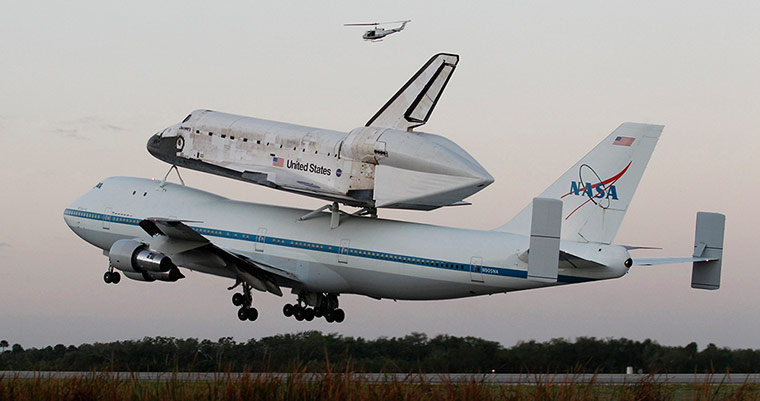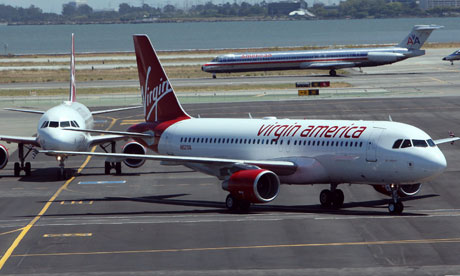- July 2012 - An engine fails during runway tests, the National Transportation Safety board (NTSB) rules it a contained failure;
- December 4th 2012 - A United Airlines 787 makes an emergency landing after problems with the electrical power distribution panel;
- December 5th 2012 - the Federal Aviation Administration ordered mandatory inspections of 787s after leaking fuel lines on two aircraft which were traced to a faulty assembly;
- December 13th 2012 - Qatar airways 787 is grounded with electrical power distribution problems;
- December 17th 2012 - United finds electrical problem in second 787;
- January 7th 2013 - Fire starts in Li-ion battery pack for the APU of a Japan Airlines 787 after landing in Boston (KBOS);
- January 8th 2013 - United finds improperly installed wiring to same Li-on battery that caught fire on JAL 787. A takeoff was aborted on a JAL 787 after an open fuel valve caused a fuel spill;
- January 9th 2013 - All Nippon airlines cancels a 787 flight after a computer wrongly reported a brake problem;
- January 10th 2013 - 787 flown by Japan's All Nippon Airways develops cracks in cockpit window
- January 16th 2013 - JAL and ANA ground their 787's after an ANA Dreamliner is forced to make an emergency landing where the pilot report a battery malfunction.
 |
| Boeing 787 aircraft grounded in Japan - BBC |
As of today the US and European aviation agencies have said all the planes should be grounded. They are worried the batteries installed on the aircraft may leak, corroding vital equipment which could potentially cause fires.
 |
| ANA 787 after an emergency landing in Japan - http://www.salon.com |
Eight airlines currently operate the Boeing 787, totalling 50 aircraft which have all been grounded:
- Air India: 6
- All Nippon Airways (Japan): 17
- Ethiopian Airlines: 4
- Japan Airlines: 7
- LAN Airlines (Chile): 3
- Lot Polish Airlines: 2
- Qatar Airways: 5
- United Airlines (US): 6
After the emergency landing in Japan, investigators have begun removing the battery packs from their aircraft. They say it is deformed and discoloured, and a large amount of liquid electrolyte had leaked from the battery on the interior of the plane's fuselage. The electrolyte is known to be flammable.
Grounding aircraft on this scale hasn't occurred since 1979 when the FAA ordered a general grounding of the McDonnell Douglas DC-10 following a fatal crash.
Boeing said it supported the FAA's decision, but added it was confident the 787 was safe. CEO Jim McNerny said:
"We will be taking every necessary step in the coming days to assure our customers and the travelling public of the 787's safety and to return the airplanes to service."
"Boeing deeply regrets the impact that recent events have had on the operating schedules of our customers and the inconvenience to them and their passengers."
Following the issues with the aircraft, it will only be a matter of time before we see the affect that may occur in terms of airlines such as Thomson, British Airways and Virgin who haven't yet had their aircraft delivered reconsidering and cancelling their orders in favour of perhaps the Airbus A330. Which has been flying since 1994 and is a comparable and aircraft to the 787 which has proven its worth.
The success of the Boeing 787 Dreamliner lies in the balance, Boeing needs to sell 1,100 of the aircraft over the next 10 years to break even on their investment into the product. The US company currently dominates the airliner market along with its European rival Airbus.
***************************************************UPDATE 18/03/13************************************************* Boeing has halted all deliveries of the 787 while the safety concerns over the batteries is being addressed.
Sources:
The Telegraph
BBC news
CBC news
Wikipedia
Grounding aircraft on this scale hasn't occurred since 1979 when the FAA ordered a general grounding of the McDonnell Douglas DC-10 following a fatal crash.
Boeing said it supported the FAA's decision, but added it was confident the 787 was safe. CEO Jim McNerny said:
"We will be taking every necessary step in the coming days to assure our customers and the travelling public of the 787's safety and to return the airplanes to service."
"Boeing deeply regrets the impact that recent events have had on the operating schedules of our customers and the inconvenience to them and their passengers."
Following the issues with the aircraft, it will only be a matter of time before we see the affect that may occur in terms of airlines such as Thomson, British Airways and Virgin who haven't yet had their aircraft delivered reconsidering and cancelling their orders in favour of perhaps the Airbus A330. Which has been flying since 1994 and is a comparable and aircraft to the 787 which has proven its worth.
The success of the Boeing 787 Dreamliner lies in the balance, Boeing needs to sell 1,100 of the aircraft over the next 10 years to break even on their investment into the product. The US company currently dominates the airliner market along with its European rival Airbus.
***************************************************UPDATE 18/03/13************************************************* Boeing has halted all deliveries of the 787 while the safety concerns over the batteries is being addressed.
Sources:
The Telegraph
BBC news
CBC news
Wikipedia















